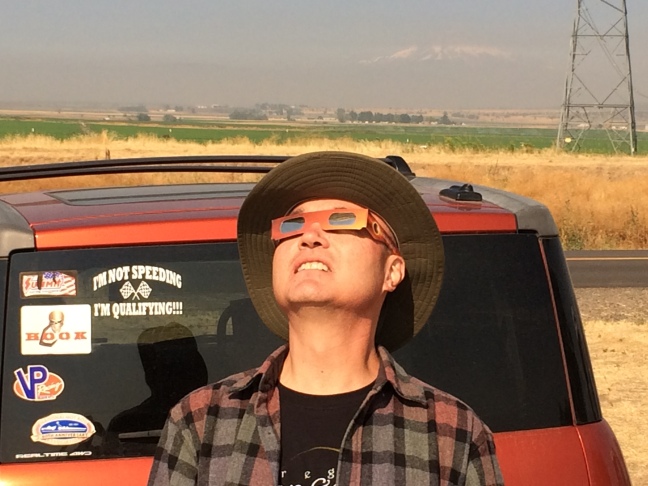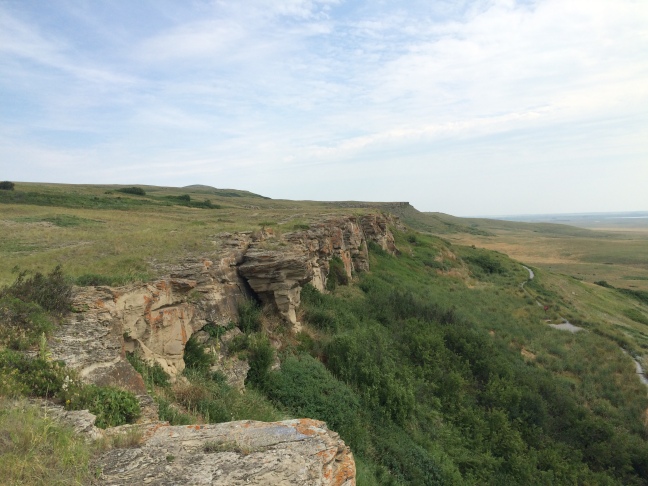My daughter and I spent five days in Burlington, Vermont, during our July 2018 vacation. We’d been to Vermont before a couple of years ago, but this was our first time in Burlington. It’s a great place to visit and I’d consider moving there except for the Vermont winters.
Burlington is unique because although it’s the largest city in Vermont, it has a population of only 43,000 people. This makes it the smallest, largest city in any state. As a result, the city’s culture is condensed and concentrated. The downtown area is centered around Church Street, with several blocks closed to vehicular traffic, creating a pedestrian thoroughfare. Church Street is full of restaurants, bars, clubs, and shops, with many of the service establishments offering outdoor seating. Lights are strung across the street and provide a inviting atmosphere in the evening. Here’s a photo I took.

You can walk down the street and hear music from bands and DJ’s. One spot I liked is called Red Square. Everyone was dancing to the DJ’s mix and drinking up a storm. Walk down a few doors and there’s a band playing. On Friday nights there might be a stage set up in the pedestrian thoroughfare with a band playing, as there was the Friday night I was there. You don’t have to get in a car and drive anywhere; everything is concentrated into this one, vibrant area, and it’s a lot of fun. It reminded me a little bit of Bourbon Street and Magazine Street in New Orleans, except neat and tidy. There’s also a Ben and Jerry’s ice cream shop that shows outdoor movies for the kids. The eating establishments are varied and the food was pretty good wherever we ate. In particular, there’s a very good ramen operation. My daughter is a ramen fan and she rated the ramen there as the best she’s had.
Another cool thing about Burlington is that it sits on Lake Champlain and there is a very beautiful beach, called North Beach, right there in town. North Beach is staffed with lifeguards, has bath/changing rooms, a snack bar, and a concession that rents out stuff like canoes and stand-up paddle boards. During the summertime the water temperature is doable for swimming; about 72 degrees. So, not warm, but doable. Definitely warmer than summertime in Lake Tahoe, if you know what that’s like. Here’s a photo looking across Lake Champlain from North Beach.

As you can see, there’s a boat there on the right, which probably docks at the marina a mile or so down the coast, a few blocks below Church Street. I was surprised that many of the people I heard talking at North Beach were speaking French, which added a somewhat exotic, European flavor to the experience. The Canadian province of Quebec shares a border with Vermont, and the people there speak French, so that explains it.
The people I met in Burlington were, for the most part, service/wait staff, and were very friendly. I asked if they were Vermont natives and found that many were not. It seems that some of them stumbled across Burlington during travel and decided to stay. One guy in particular said he was working with a traveling carnival and when the carnival hit Burlington he quit and has been living there ever since. So, Burlington has sort of an “island of misfit toys” feel to it, as regards the residents.
There is also a unique museum close by in the town of Shelburne, Vermont, which also sits on Lake Champlain. The Shelburne Museum is about a fifteen minute drive from Burlington and is a must-do activity if you’re visiting the area. It’s unique because it houses a wide variety of Americana art and artifacts in several buildings that were mostly relocated from other parts of Vermont. For example, one building houses a collection of circus artifacts, including a miniature circus. Here’s a photo I took.

Another building houses what must be the world’s largest collection of decoy ducks. OK, so maybe decoy ducks aren’t your thing. You might like this steamboat, which is parked there on the museum property.

Another building houses my favorite collection: an authentic general store from the period just after the American Civil War. Every item in the store is genuine and period-specific, so when you walk in it’s like being transported back in time. Here’s a photo.

There are collections of glassware, fabric, fine art (including a beautiful painting by Andrew Wyeth), and even cigar-store Indians. Almost everyone will find something that will be of interest. You might be wondering where they got this odd collection of so much different stuff. Well, it turns out that most of the stuff was collected by a lady named Electra Havemeyer Webb. This lady was a wealthy New York socialite and world-class pack-rat, er, collector. There was always the question of what would become of all her stuff when she passed away. The answer is the Shelburne Museum.
Another recommendation is to visit the Inn at Shelburne Farm for dinner. It’s a working farm so all the food served at the restaurant is raised or grown right there. Truly “farm to table.” The Inn and restaurant are housed in a mansion that served as a summer home for the Vanderbilt family. It’s situated in a beautiful location on the shore of the lake. Here’s a photo from the lawn at sunset.

I highly recommend a visit to Burlington and the surrounding area. Hopefully this post will pique the interest of people who never would have considered it as a destination. The next time I go will be during the fall so I can see the trees in autumn.


